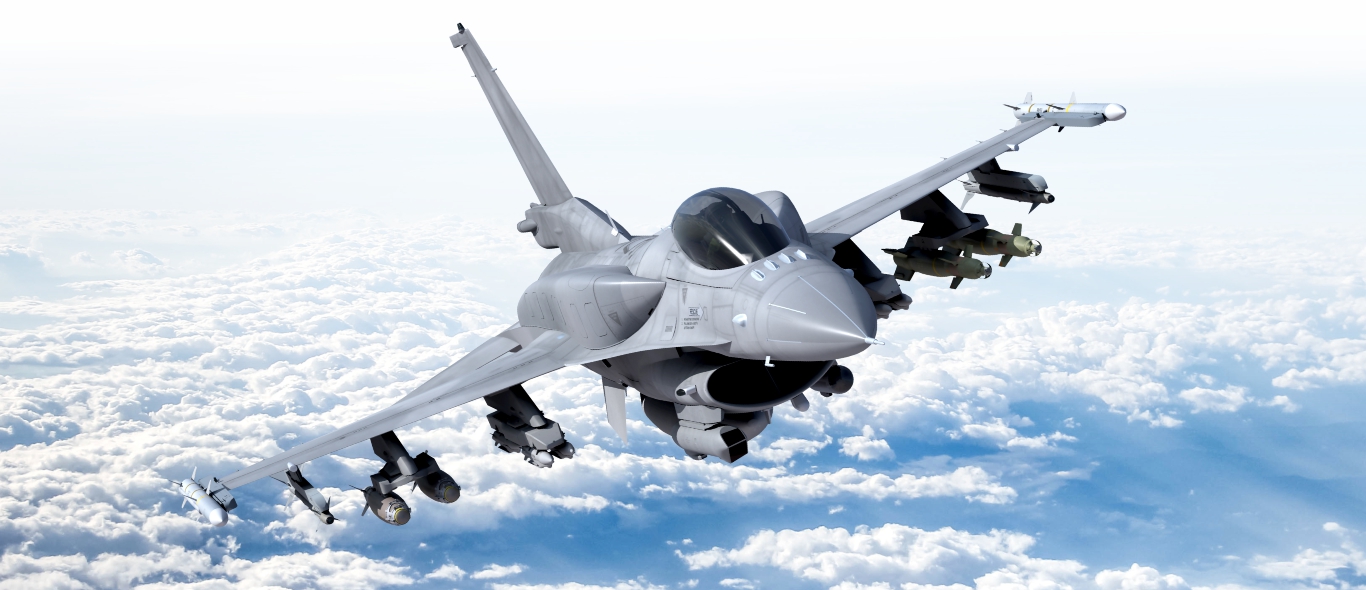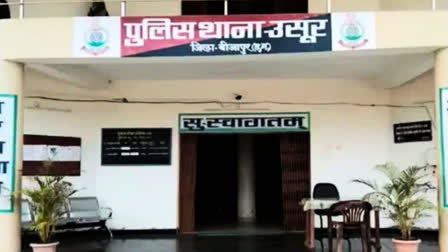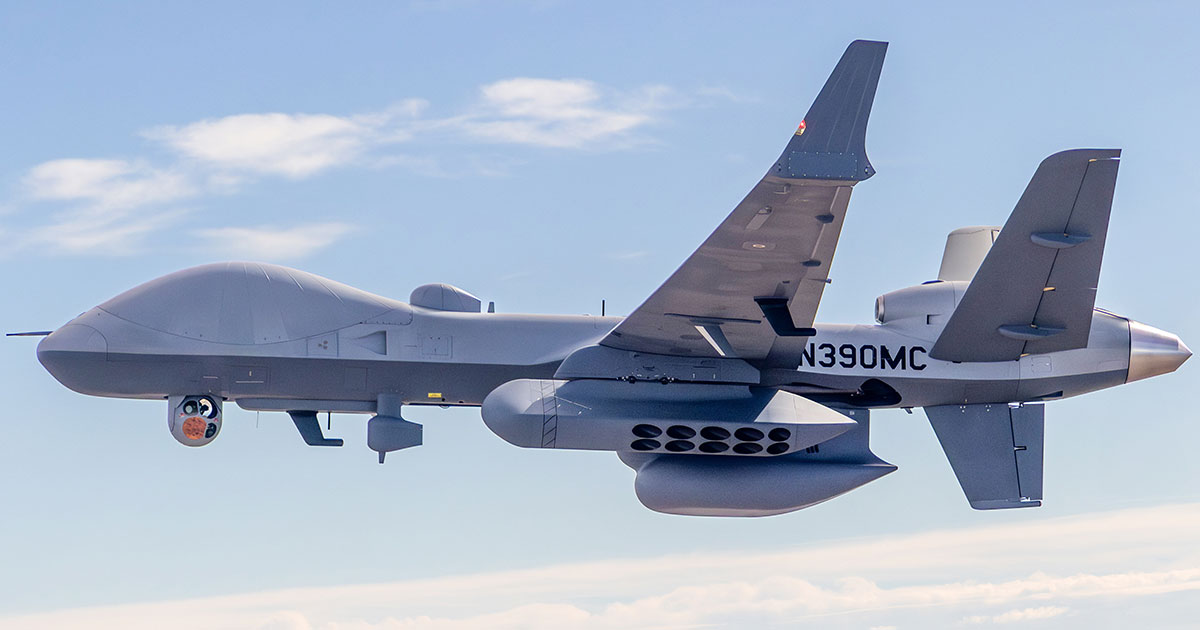SOURCE: RAUNAK KUNDE / NEWS BEAT / IDRW.ORG

In the race for India’s highly anticipated Multi-Role Fighter Aircraft (MRFA) deal, Swedish defense technology giant Saab has made significant strides by offering to establish full-scale production of its Gripen fighter jets in India. Kent-Ake Molin, Saab Campaign Director and Head of Gripen for India Programme (Business Area Aeronautics), recently emphasized the company’s commitment to indigenization and localization efforts in India. He stated, “We foresee that we can set up full-scale production in India, which will include everything; not just airframe, but also systems and software.”
Saab’s proposal goes beyond just delivering aircraft; it aims to create an entire ecosystem centered around the Gripen platform in India. The defense major has been in favorable discussions with multiple private partners, laying the groundwork for what Molin referred to as a “rapid indigenization” strategy. This move aligns with the Indian government’s Make in India initiative, aimed at boosting domestic defense manufacturing capabilities and reducing reliance on foreign imports.
Continue readingSOURCE: RAUNAK KUNDE / NEWS BEAT / IDRW.ORG
_619x316.jpg)
France has offered to collaborate with India on the development of a very-long-endurance Uncrewed Underwater Vehicle (UUV). This advanced underwater drone could be configured to perform a variety of missions, including intelligence, surveillance, and reconnaissance (ISR), undersea mapping, mine-hunting, and mine-laying.
The UUV, approximately the size of a small fighter jet, would have the capability to operate for extended periods underwater, thanks to its advanced propulsion and energy systems. It could also function as a mothership for smaller UUVs, carrying and deploying them for specific tasks.
Continue readingSOURCE: RAUNAK KUNDE / NEWS BEAT / IDRW.ORG

The Indian Air Force (IAF) is actively seeking a Bird Detection and Monitoring Radar (BDMR) system to address the significant threat posed by bird strikes. Bird activity has curtailed air operations in the IAF due to the substantial damage caused by these incidents. Unfortunately, bird strikes have led to accidents resulting in the loss of aircraft and precious lives.
The IAF recognizes the urgent need to mitigate the risks associated with bird strikes and is committed to providing a safer environment for its operations. The induction of BDMR technology will play a crucial role in achieving this goal.
Continue readingSOURCE: AFI

The AUKUS pact, announced in 2021 as a trilateral security agreement between Australia, the United Kingdom, and the United States, was initially heralded as a major defense breakthrough. At the core of this pact was the promise of advanced nuclear-powered submarines (SSNs) for Australia, giving the nation a formidable naval capability in the Indo-Pacific. However, recent admissions from the U.S. Congress suggest that Australia may not actually receive these submarines after all. Instead, the U.S. has proposed an alternative plan to station U.S.-crewed Virginia-class SSNs in Australia. This controversial move has sparked debates not only about the viability of AUKUS but also about Australia’s strategic autonomy and the future of its naval ambitions.
Given these developments, an intriguing question arises: Should India, a key player in the Indo-Pacific, step in and offer Australia a partnership in its SSN program as an alternative to the faltering AUKUS submarine deal?
Continue readingSOURCE: AFI

The United States is keen on securing India’s Medium Multi-Role Fighter Aircraft (MRFA) tender, which aims to procure 114 fighter jets for the Indian Air Force (IAF). However, the US is offering older jets like the F-16, rebranded as the F-21, raising concerns about whether these platforms are adequate for India’s evolving defense needs. The primary motivation behind offering these jets is to establish a strategic foothold in India’s defense market, allowing for potential future collaborations and partnerships in advanced defense technologies.
Lockheed Martin’s F-21 is essentially an upgraded variant of the F-16, a platform that has been in service since the 1970s. Despite various modernizations, some experts argue that the F-16’s basic design is outdated compared to newer jets being offered in the MRFA tender. Competing jets include the French Rafale, Boeing’s F/A-18 Super Hornet, Eurofighter Typhoon, Russian MiG-35, and Sweden’s Saab Gripen.
Continue readingSOURCE: AFI

India has been steadily growing its defense ties with nations across Southeast Asia, and a significant step in this direction is its offer to co-develop weapons with the Philippines. The Indo-Pacific region’s evolving security landscape, marked by rising territorial tensions and growing concerns over China’s assertive behavior in the South China Sea, has brought defense cooperation to the forefront for both countries. India’s burgeoning defense industry, with its successful track record in indigenous weapon development and export, offers the Philippines an opportunity to enhance its military capabilities and fortify its defense posture.
India, with its rapidly advancing defense manufacturing sector, can provide both expertise and equipment that would significantly benefit the Philippines’ modernization drive. The co-development approach would allow the Philippines to tailor weapons systems to its specific operational needs while benefiting from technology transfer and indigenous production capabilities.
Continue readingSOURCE: AFI

The Indian Army is actively seeking 5G mobile handsets (UEs) that adhere to the MILGRAD/JSS-55555 standard for military applications. The primary aim is to address the limitations of commercially available mobile handsets, which often require frequent deployment of base stations due to their limited range. This, in turn, increases manpower requirements, security risks, and administrative burdens within the Tactical Battle Area (TBA).
The proposed 5G mobile handsets should offer enhanced range capabilities, thereby reducing the need for numerous base stations. This would significantly improve operational efficiency and enhance security.
Continue readingSOURCE: ANI

Leading foreign policy experts have expressed their views on how Canada’s rogue allegations have strained the relationship between the two countries. In an interview to ANI, defence expert Shiwalee Deshpande said that the relations have soured significantly between the two countries. “The matters are very, very serious and the relations are strained because of the comments made by Justin Trudeau.” Commenting on the Indian government’s decision to call back Indian diplomats from Canada and expelling Canadian diplomats from India, she noted that it was, “A very strong step taken by the Indian government.
It showed to the whole world that don’t mess with India, otherwise India would come out to be very, very strong. “India will give it bad, and you will have to face the consequences”, she said. India and Canada are facing a riff due to Canada alleging India’s involvement in the killing of Khalistani terrorist Hardeep Singh Nijjar, charges which India has denied since day one and has een requesting the Canadian government to provide a proof of, which Canada has not done since over a year of these allegations being levelled against India.
Continue readingSOURCE: ANI

The hoax bomb threats will be curbed down at the earliest, assured the Director General of Bureau of Civil Aviation Security (BCAS), Zulfiquar Hasan, as he emphasised that Indian skies are absolutely safe and urged the passengers to fly without fear.
Speaking to ANI on Saturday, the BCAS DG confirmed that they are in coordination with concerned security agencies and airlines over the matter. He has assured that these hoax calls will be curbed down at the earliest as they are working over it.
Continue readingSOURCE: PTI

Two personnel of Indo-Tibetan Border Police (ITBP) were killed and two policemen injured on Saturday when Naxalites carried out an improvised explosive device (IED) blast in Chhattisgarh’s Narayanpur district, police said.
The incident occurred around 12 noon in Kodliyar forest in the Abujhmaad area when joint teams of security personnel were out on an anti-Naxal operation, Inspector General of Police (Bastar Range) Sundarraj said.
Continue readingSOURCE: PTI
Army on Saturday foiled an infiltration bid along the Line of Control in Baramulla district of Jammu and Kashmir, officials said. Alert soldiers noticed suspicious movement near the LoC in the Kamalkote area of the Uri sector and challenged the intruders, they said.
The intruders opened firing which was retaliated by the Army jawans, officials said, adding one infiltrator was believed to have been killed. The body of the slain ultra has not been recovered yet due to difficult terrain, they said.
Continue readingSOURCE: ANI

A major Improvised Explosive Device (IED) blast was carried out on a Naxal patrol search operation in the Narayanpur district of Chhattisgarh on Saturday.
According to IG Bastar P Sundarraj, the Naxals attacked the patrolling team and carried out an IED blast. Meanwhile, two army jawans were injured during the blast incident. Meanwhile, on Friday, Chhattisgarh’s Dantewada police said that at least 38 cadres of naxals were gunned down in an encounter that recently took place in the forest of Abujhmad close to the Dantewada-Narayanpur border.
Continue readingSOURCE: LANKA NAVY

INS Kalpeni (T-75), a Fast Attack Craft (FAC) belonging to the Indian Navy, arrived at the port of Colombo on a formal visit today (19th October 2024). The Sri Lanka Navy welcomed the visiting FAC in compliance with naval traditions.
The 49-metre-long Car Nicobar class Fast Attack Craft is manned by a crew of 70 and it is commanded by Lieutenant Commander Jonathan Sunil S Kothari.
Continue readingSOURCE: PTI

A Congress worker was attacked and killed allegedly by Naxalites in Chhattisgarh’s Narayanpur district on Saturday, police said. Prima facie, the killing appears to be the handiwork of Naxalites, but all possible angles were being probed, they said. The incident occurred in Usoor village around 4 pm when the victim, Tirupati Bhandari (35), who worked at a ration shop, was distributing rice to villagers, an official here said.
“Unidentified persons arrived at the scene and attacked Bhandari with sharp weapons, killing him on the spot,” he said.
Continue readingSOURCE: IDRW.ORG.

The Indian armed forces are set to receive the MQ-9B armed High Altitude Long Endurance (HALE) Remotely Piloted Aircraft Systems (RPAS), manufactured by General Atomics, between 2029 and 2030. This acquisition marks a major step in strengthening India’s surveillance, reconnaissance, and strike capabilities. The deal, valued at nearly $3.5 billion, was signed under the Foreign Military Sales (FMS) programme with the U.S. government. The 31 drones ordered include 15 Sea Guardians for the Indian Navy and 16 Sky Guardians for the Indian Army and Air Force (eight each).
According to defense officials, the first MQ-9B unit will be delivered in 51 months, with the final unit expected by 72 months after the contract signing and initial payment. This indicates that the delivery window will span from January 2029 to September 2030. The deliveries will be spaced out across 21 months, ensuring that India progressively receives its fleet of 31 drones.
Continue reading